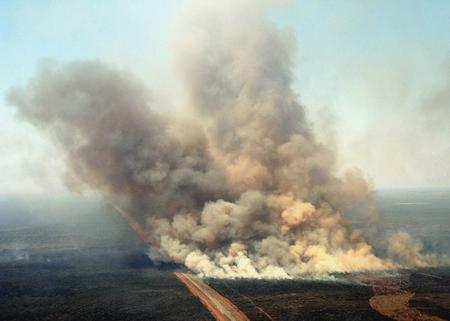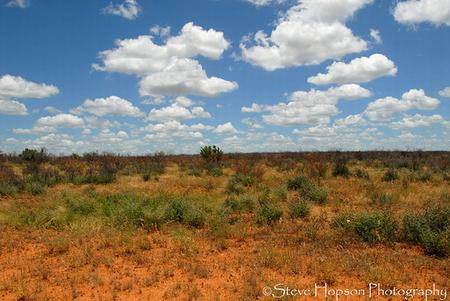White-tailed deer, like many wildlife species, prefer habitat that is at lower successional stages. Simply stated, deer like plant communities that are dominated by plants that are considered first responders after disturbance. Any disturbance helps set back plant succession, whether it be disking established areas, clear-cutting portions of forests, or natural or prescribed fire. And although hunters understand that deer management practices are designed to improve habitat, many habitat management practices are really only designed to mimic processes that occur naturally.
Of course, when it happens naturally land managers have very little control. Such was the case last year in Texas when the almost 15,000 acre Chaparral Wildlife Management Area (WMA) unexpectedly caught fire. It was March of 2008, but because of extremely dry spring conditions, a fire that started adjacent the area burned 95% of the state-owned WMA! Anyone that knows anything about the Chaparral WMA knows that the area is representative of South Texas brushland, but active habitat and deer management practices maintain a healthy deer herd that boast some big ole whitetail bucks.
Prescribed fire is an effective management tool for deer throughout the white-tailed deer’s range because most native brush species respond well by root-sprouting, regrowing, and providing high-protein browse. You see, most plant species are well-adapted to fire, but all deer managers that use fire as a management tool prefer prescribed or controlled burning. The fire that swept across the Chaparral WMA, on the other hand, was a wildfire. And although wildfires and prescribed fires ultimately have the same impact on native plants, prescribed fires are planned and allow burners the most preparation. Prescribed fires allow landowners the ability to pre-select the areas to be burned and the conditions under which they are burned.

For those interested in using fire as a management tool, it’s recommended that no more than 20% of a property be burned annually. This keeps different successional stages of plants located throughout the property and provides deer with optimal forage. I mentioned earlier that the wildfire that crossed the Chaparral burned 95% of the research WMA. Keep in mind that the perimeter of the area is game-fenced and very few deer were found dead post-fire, so that left all the deer found on the 15,000 acre property about 700 non-burned acres to forage. But white-tailed deer are resilient animals.
Chaparral WMA staff and researchers from Texas A&M University-Kingsville used the effects of the wildfire to monitor how deer living on the area would respond. What would deer eat in the short-term? Would there be enough food to maintain body condition and support fawning? That was just a few of the questions managers needed to answer to determine if the deer herd could respond the the widespread setback in habitat.
It’s important to note that the month of March is smack-dab in the middle of a white-tailed does’ pregnancy. And pregnancy requires a high amount of dietary input. Researchers collected does at two week intervals from mid-April to mid-June and recorded live weight, body condition, rumen contents, and the number and size of fetuses. A total of 28 does were collected and 23 pregnant does carried 6 single fawns, 16 twins, and 1 set of triplets. Shortly after the fire, rumen contents consisted primarily (90%) of cactus and grasses. However, deer shifted to forbs and mast (fruits) as these foods became available after the fire.

Data collected on the Chaparral WMA found that deer were able to maintain body condition and pregnancy after a large-scale fire. However, the management area did have a lot of things going for it that may or may not be available in some areas. First, the deer herd was below the carrying capacity of the land prior to the fire. In addition, the area was fortunate to have an abundance of cactus that provided a moisture-rich post-fire food for white-tailed deer. Although deer were able to switch their diets in order to survive, would this be the case in your area after a wildfire?
Fire is one of the most beneficial tools in wildlife management because when used properly it is very economical. In addition, fire releases nutrients that are bound in dead organic material, fire stimulates the germination of certain plant species, and fire controls plants such as blueberry cedar that are not fire adapted. And although we have learned that whitetail can cope with large-scale fire in South Texas, I do not recommend burning more than 20% of your property on an annual basis. Just keep in mind that with burning 90% of the work takes place before you strike the first match.